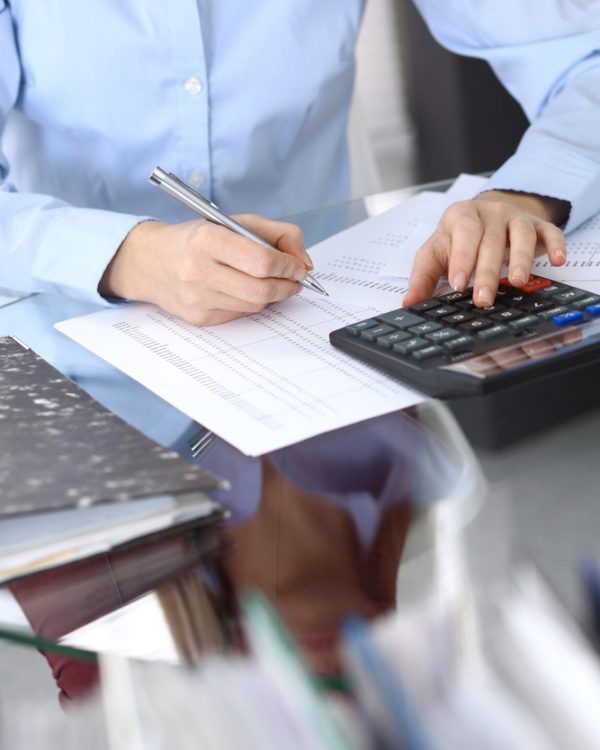Fraud Damage Calculation Services in Houston
Fraud damage calculations are characterized by their complexity and may involve one of several calculation methods. These methods include:
- Out-of-pocket method
- Benefit-of-the-bargain method
- Benchmarking method
- Modeling method
- Before-and-after method
Which method your accounting team chooses to use depends on the case’s specifics and the available information. The goal is to secure the largest possible damages award for their client and to support any criminal litigation against the offender.

Fraud Damage Calculation Methods
The first step is identifying whether or not fraud has been committed against you or your organization. The next step is calculating those fraud damages. To do so, your forensic accounting team will use one of the following calculation approaches:
Out-of-pocket method
The out-of-pocket method is typically the simplest and is often reserved for cases where the numbers are clearly defined and easy to calculate.
Using the out-of-pocket approach to damage calculations, the idea is to calculate the difference between the advertised value of an asset (and its purchasing cost) to its actual value. For example, a warehouse owner is selling their warehouse for an advertised value of $500,000 – and he may provide falsified valuation data to make his case. In fact, because he’s willing to make a deal, he offers it below the stated value at $400,000.
However, due to underlying factors the warehouse is actually only worth $300,000. The buyer doesn’t know this, of course, and pays the $400,000 thinking they got a bargain. On the other side of the transaction, they uncover the fraud and seek damages.
Using the out-of-pocket method, the damages would be calculated at $100,000. The math is simple – the damages are equal to the difference between what the buyer paid ($400,000) and what the property was worth ($300,000).
Benefit-of-the-bargain method
However, it’s more common for accounting professionals to use the benefit-of-the-bargain approach instead, as this usually provides a larger award. In the same example, instead of using the difference between what the buyer paid and the actual value of the property ($100,000), the benefit-of-the-bargain method calculates the difference between the asset’s fraudulent valuation ($500,000) and what the buyer paid for the asset, which comes out to $200,000. While the math is rarely this simple, the principle is the same. In many cases, the benefit-of-the-bargain method will net a larger award for the plaintiff.
However, when businesses are involved, calculating fraud damages is much more complicated. If the fraud can be traced to a single transaction, then the out-of-pocket or benefit-of-the-bargain method may be sufficient, but when fraud causes damage to the business over time, forensic accounting experts have to rely on more sophisticated calculation methods like the following:
Benchmarking method
When benchmarking, accounting teams compare the defrauded company with a similar business – in the same industry and market, and around the same age – that hasn’t been affected by fraud. The goal is to determine the likely performance of the company – in terms of profit – if it hadn’t been defrauded.
Accounting professionals use publicly available financial and performance statements to develop these benchmarks. If there is a significant difference in profit between the two businesses, that difference may be explained as potential fraud.
Benchmarking is particularly useful for newer businesses that don’t have a long performance history to draw from. However, accounting experts can also benchmark the defrauded company – using past performance before fraudulent activities as the baseline.
Modeling method
Modeling is similar to benchmarking, but instead of comparing the defrauded business to a similar company, a hypothetical model of the business is used to calculate fraud damages.
Modeling is almost exclusively used with newer companies, as sufficient past performance data may not be available. Accounting experts use the available market evidence to determine whether fraud has damaged the company, and to what extent. For example, if the company was unable to fulfill certain orders due to fraud causing issues, damages may include the loss of revenue due to those missed orders.
Before-and-after method
In many cases, fraud represents a constant drag on the business and causes mounting damages to the organization. Using the before-and-after calculation method, accounting experts use the company’s profits prior to the fraud as a comparison point. The loss of profits following the start of fraudulent activity is included in the damages.
The before-and-after method is best for older businesses, where there’s a history of performance data to draw from.
An Expert Forensic Accounting Team Can Perform Fraud Damage Calculations for Your Organization
Fraud damage calculations are complex projects that require expert-level forensic accounting skills to properly execute. These accounting skills can be used to detect fraud in your organization if it’s present, or to support criminal litigation against a supported fraudster.
Expert forensic accounting teams can also calculate the extent of any fraud and the damage it’s caused to your business. These calculation methods may involve data forensics, investigation, on-site inspections and extensive financial analysis to identify unusual transaction patterns. The mission is to isolate what fraud has done to your organization so you can seek compensation.

